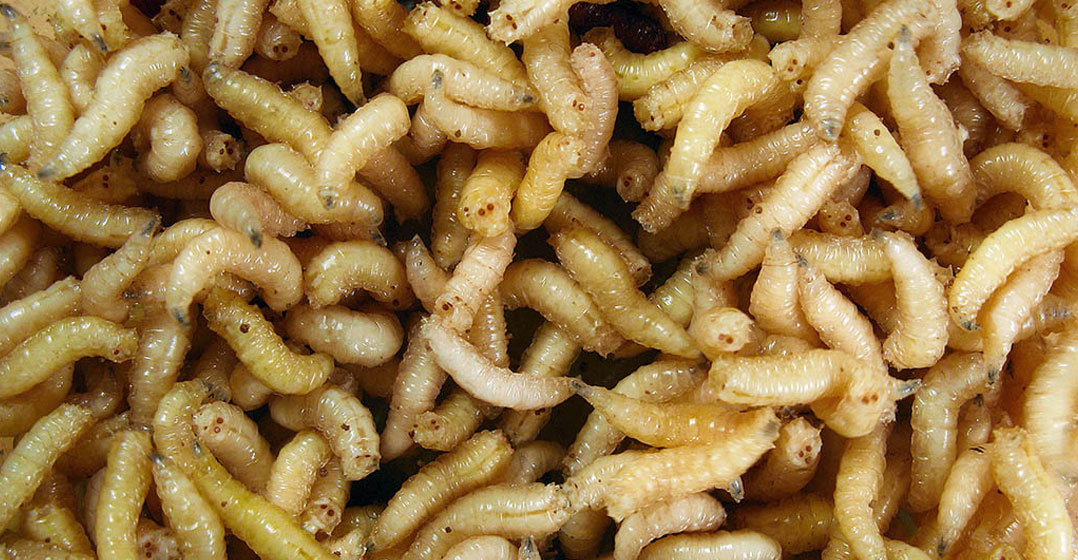 Before you can see it, you can smell it. In a run-down area on the outskirts of Cape Town, trucks are pouring tons of rotting food waste into metal skips, the first step before the concoction is liquidised and then tipped into trays to feed millions of wriggling maggots.
Before you can see it, you can smell it. In a run-down area on the outskirts of Cape Town, trucks are pouring tons of rotting food waste into metal skips, the first step before the concoction is liquidised and then tipped into trays to feed millions of wriggling maggots.
Soon, it will be fish food — and also a solution to the persistent problem of methane emissions, a big contributor to climate change.
Decomposing garbage in landfills produces about 5% of the world’s greenhouse gas emissions. Many countries have banned organic waste from them, so finding an alternative use for decomposing garbage is a business that’s becoming increasingly attractive.
AgriProtein set up the factory in 2015 to show that garbage-eating insects can be used to produce feed for fish and livestock, and now it receives 15 tons of refuse a day from restaurants and stores around Cape Town. The larvae of black soldier flies that eat it are allowed to grow before being desiccated and turned into meal, which is then sold to fish farms. The mandate to fight climate change is at the heart of the business.
“We are right at the muck end of it, repairing our future,” said Jason Drew, AgriProtein’s CEO and founder. He founded the company after experimenting with the insects in a tractor shed at his farm in Tulbagh, about 120km north-east of Cape Town, in 2008.
AgriProtein’s parent company, the Insect Technology Group, plans to start building much larger plants in California and the Netherlands this year, with the aim of each processing 250 tons of waste a day. A few other companies — the Netherlands’ Protix, France’s Ynsect and Innova Feed, Canada’s Enterra Feed, and US company EnviroFlight — have also got into this business in the last few years.
Large investors
The companies are beginning to attract large investors. Exxaro Resources, one of South Africa’s biggest coal companies, has a stake in AgriProtein, and Rabo Corporate Investments, the private equity unit of Rabobank Group, has taken a stake in Protix.
“It’s the next wave. First it was landfilling, for good reason it became incineration, for good reason it became anaerobic digestion. For even better reasons it becomes insects,” said Kees Aarts, the CEO and co-founder of Protix. “Discarding it in one big pile benefits no one.”
Visitors to Agriprotein’s facility receive an elaborate safety presentation including a warning of how to avoid spider bites. The spiders go after the maggots — and birds, houseflies and cockroaches are also a problem.
The plant’s first room, lit with blue ultra-violet light, contains the fly colonies: almost 200 mesh cages and plastic tubes that each house several thousand black soldier flies. Escapees zoom around the room, occasionally landing on workers. Insect zappers mounted on the wall intermittently spark.
The insects lay their eggs on trays in the cages. The workers remove the trays, and then move them to another room, placing them on top of funnels. The neonates, or baby maggots, slide down those after hatching. The baby maggots then get transferred to yet another room stacked with trays of foul-smelling waste sludge into which they burrow and begin to grow.
Within a few weeks, the brownish maggots mature and are killed with heat and then turned into a high-protein meal that can be fed to fish, pigs, chickens or pets. Other products include maggot oil, also used in feed; and frass, or maggot droppings, particularly suited to the growing of seedlings.
Huge demand
“Right now demand is bigger than supply,” said Elsje Pieterse, a lecturer in the department of animal sciences at Stellenbosch University who researches insect farming. “It’s an industry with a lot of potential.”
AgriProtein has an adjacent laboratory where a team of scientists assess how to make the maggots grow faster and what else they can be used for. In one experiment, they’re trying to learn if chitin, the substance that makes up the hard shells of insects, could be used in organ transplants as a substitute for the natural protein mesh, or scaffolding, that keeps organs in place. The scientists are also exploring using maggot extract as an acne treatment.
The factories have a lot of scaling up to do. Even with the economy contracting, AgriProtein is still moving forward with its plans to build a new plant in Jurupa Valley, on the outskirts of Los Angeles. But there would need to be 16 plants of the same size to take in all of the state’s organic waste, according to Drew.
And that’s not cheap. Industrial-scale maggot plants cost between US$50-million and $100-million in many parts of the world, and the industry is so new that there aren’t a lot of scientists with experience in breeding fly larvae on an industrial scale. In the European Union, regulations ban the use of consumer waste in food production, according to Drew, which limits their potential sources of material.
Drew and Aarts, of Protix, also know they have some work to do to convince consumers their products aren’t revolting. Ultimately, though, these two entrepreneurs think the starkness of our climate future will convince people that solutions have to come by unconventional means, like maggots processing waste.
“The world is long on waste and short on protein,” Drew said. “We are helping bridge the gap.” — Reported by Antony Sguazzin, (c) 2020 Bloomberg LP




